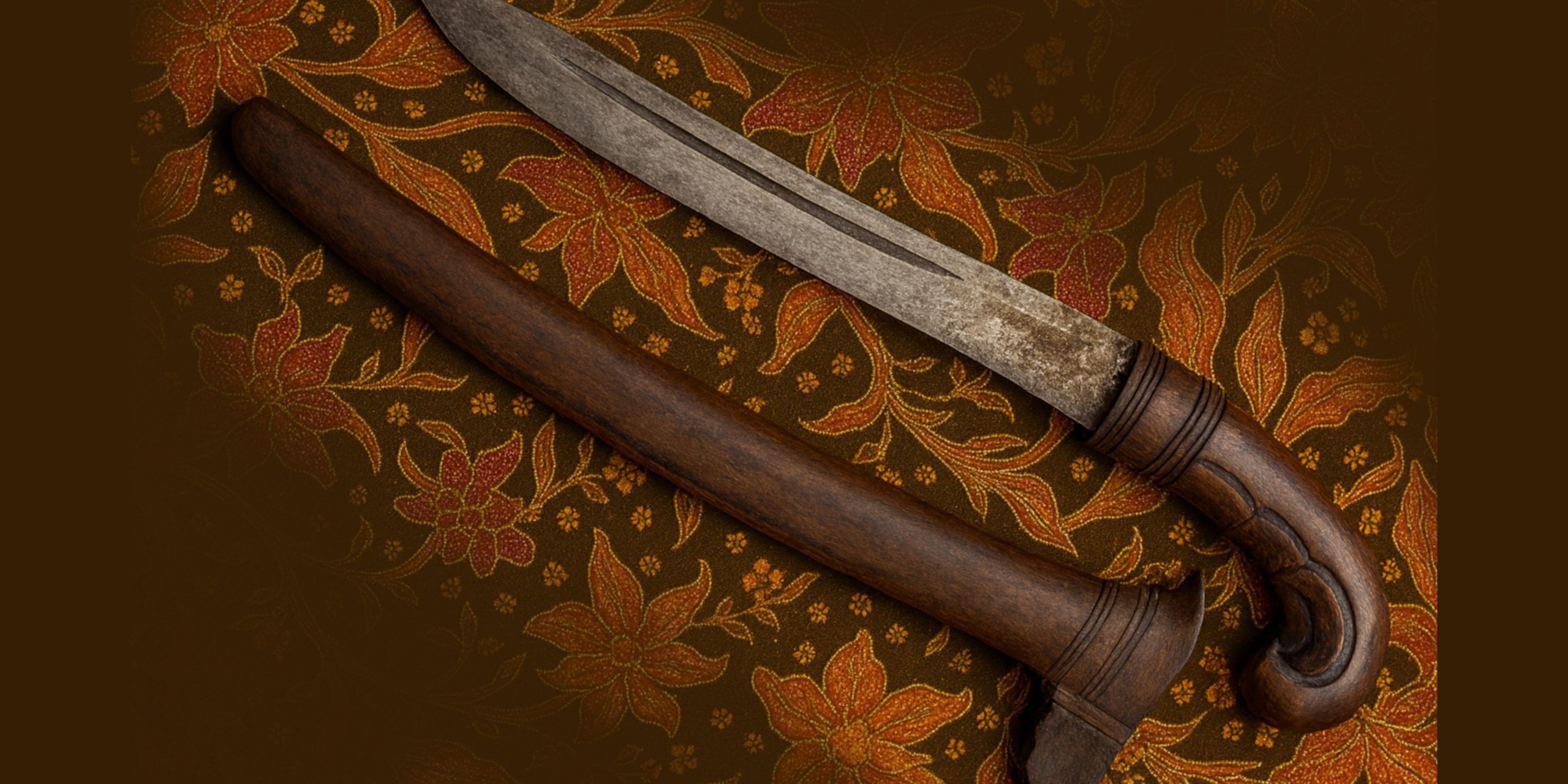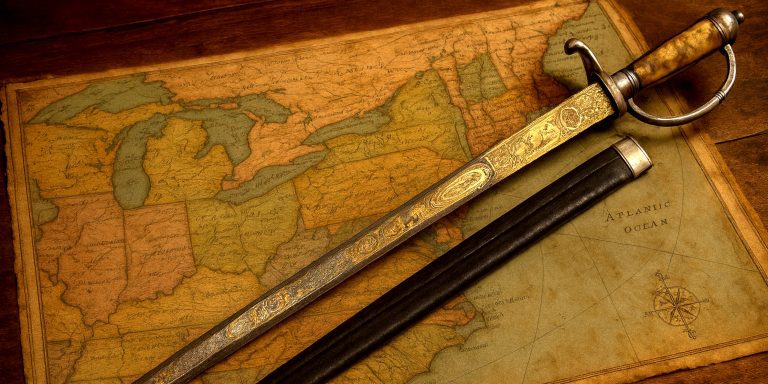
The golok is a rugged and versatile cutting tool originating from the Indonesian archipelago. Blurring the line between machete and sword, it has served both martial and utilitarian roles in Southeast Asia for centuries. Its robust design, regional diversity, and cultural significance make it a distinctive weapon in the history of edged arms.
The golok is a traditional bladed weapon used across Indonesia, Malaysia, and the Philippines. Although often compared to the machete, the golok has a heavier blade and more varied forms. It has been wielded by tribes, militias, farmers, and soldiers alike, prized for its cutting power in jungle environments and close-quarter combat.
Specifications
| Feature | Details |
|---|---|
| Blade length | 25–50 cm (10–20 inches) |
| Blade shape | Slightly curved or straight; forward-weighted |
| Blade thickness | Thick spine for durability |
| Edge | Single-edged; convex grind common |
| Hilt material | Wood, horn, or bone |
| Sheath | Wood, often decorated with rattan or leather |
| Weight | 500–900 grams |
History and Evolution
- The golok has deep roots in Austronesian tool-making traditions.
- Earliest versions were likely agricultural, adapted later for warfare.
- It was widely used by anti-colonial fighters in Indonesia, particularly during Dutch occupation and the National Revolution.
- Regional variations emerged across Sumatra, Java, Kalimantan, and Sulawesi, each with unique blade profiles and handle designs.
- In modern times, it remains in use by the Indonesian military and is a symbol of national martial culture.
Advantages and Disadvantages
Advantages:
- Excellent for cutting through dense foliage.
- Durable and easy to maintain in rough conditions.
- Effective in close combat due to weight distribution.
- Can be crafted from local materials, allowing for wide accessibility.
Disadvantages:
- Lacks the finesse of longer swords in open combat.
- Shorter reach limits effectiveness against polearms or long blades.
- Regional quality varies, with some examples poorly balanced or roughly finished.
Comparison with Similar Weapons
| Weapon | Origin | Key Differences |
|---|---|---|
| Machete | Latin America | Lighter, thinner blade, less effective in combat |
| Parang | Malaysia | Similar, but often longer with a deeper curve |
| Kukri | Nepal | More extreme inward curve, designed for chopping |
| Bolo | Philippines | Comparable utility, but often broader tipped |
Legacy
- The golok is a cultural symbol in Indonesia, particularly in West Java where it is associated with the Sundanese people.
- It features prominently in Pencak Silat, the traditional martial art of the region.
- Certain types, such as the Golok Ciomas, have legendary status and are tied to mysticism and resistance folklore.
- Indonesian military and police forces still use modern variants.
Where to See
- Museum Nasional Indonesia (Jakarta): Home to historical golok examples from Java and Sumatra.
- Museum Pusaka (Taman Mini, Jakarta): Specialises in Indonesian bladed weapons.
- British Museum (London): Holds several colonial-era goloks.
- Musée du quai Branly (Paris): Displays Southeast Asian arms, including goloks collected during French Indochina campaigns.
Collector’s Guide
What to Look For:
- Provenance and age: Goloks from the 19th century or earlier are most valuable.
- Craftsmanship: Look for hand-forged blades and carved hilts.
- Regional traits: Goloks from Banten, Aceh, and Kalimantan are highly sought after.
- Condition: Avoid blades with heavy corrosion or missing fittings.
Estimated Auction Prices:
| Type | Estimated Value (GBP) |
|---|---|
| Antique Sundanese Golok | £300–£700 |
| Golok Ciomas (historic type) | £1,000–£2,500 (if authentic) |
| WWII-era military Golok | £150–£400 |
| Contemporary artisan Golok | £80–£200 |
Note: Provenance, documentation, and cultural restrictions (including export laws) significantly affect value and availability.
The golok endures as both tool and weapon, retaining practical relevance while carrying rich cultural weight. For collectors and martial historians, it offers a tangible link to the resilience and ingenuity of Southeast Asian heritage.



